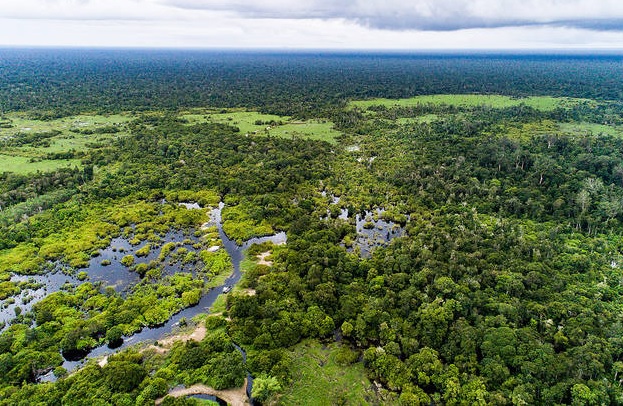
Recovery of peat ecosystems needs to consider the farmer’s role. In peat restoration action farmers must be considered as the primary partner.
The Deputy conveyed this for Education, Socialization, Participation and Partnership of the Peat Restoration Agency (BRG), Dr Myrna Safitri, in the National Seminar on People’s Economy in the Transformation of Peat Villages organized by the Center for Democracy Economics Study (PUSTEK) UGM in collaboration with BRG online on Friday (8/19).
Myrna said that the government had developed a Peat Care Village Program (DPG) as one part of accommodating community participation and support in peat restoration. This program connects rural areas within the peat hydrological unit. Until April 2020, BRG had initiated 525 villages spread across Sumatra, Kalimantan and Papua.
This program promotes community participation and provides alternative agriculture without burning. Thus, it aims to improve the welfare of the community, prevent damage to peat ecosystems, and prevent forest and land fires which can later increase the index of village building.
“The government has facilitated the establishment of rural areas in the DPG,” he said.
He said that people who live in the peatland area have long used peatlands as their primary source of income. Problems occur related to the government’s ban on not burning peatlands when ones intend to open new land. To answer this problem, the government initiated a farmer field school and developed a demonstration plot without land management (PLTB) in peat areas.
“There are 276 villages/sub-district that get local innovation and appropriate technology development activities in 2019. It was involving 799 farmers and successfully developing 265 natural and non-burning agricultural demonstration plots,” he explained.
Peatlands hold great potential both now and in the future. Therefore, Myrna stressed the importance of harmony with spiritual economic-based bogs that do not violate peat ecosystems. Consequently, it is essential to increase the carrying capacity, the development of an adaptive and innovative agricultural culture. It gives an appreciation of local creativity in young people and women towards a circular economy based on the peat ecosystem landscape.
While FEB UGM Lecturer, Dr. Revrisond Baswir said that BRG required to take a firmer step in implementing agrarian reform in peatlands and developing the Bumdes. Thus, hopefully, the populist economic process can run well.
Mubyarto Institute researcher and PUSTEK UGM researcher, Awan Santosa, S.E., M.Sc., conveyed one of the application models of the village financial network and a model of village cooperative encouragement is the development of a populist economic incubator model in villages around the forest. In developing populist economic incubators in communities around forests based on three pillars, namely the intellectual model, material capital, and institutional capital.
Intellectual models to build people such as market schools, labour schools, green schools, sugar school cooperative schools, independent village schools, fishing schools, as well as farm schools, sago schools, and coffee schools. While for the institutional capital to build institutions, both management, networking, values, culture, local wisdom and deliberation. Material capital includes financial capital, market infrastructure, information-production technology, and land, land, water, and forests.
Regent of Hulu Sungai Utara, Drs. H. Abdul Wahid HK., M.M., M.Sc., on occasion explained about the development of peat care villages in their area. The district has peatland with a total of area of 25,672 hectares. Six thousand two hundred seventy-three of the whole hectares prioritized for the restoration of canal peat or cultivation zones. This zones then undertake optimization for the development of peat care villages in 4 sub-districts. These areas are engaged in the fisheries, agriculture and handicraft sectors.
“Our region, as a whole, has a populist economic mission. We believe that we can enjoy step by step of the level of welfare with the seriousness of the community, w,” Abdul explained.
He said that his party continued to try to be present in the people’s economy. For example, ones were providing tangible support to the community by providing convenience in selling products through the handicraft market, food market and others.
Author: Ika
Photo: 8villages.com
Translator: Natasa A

